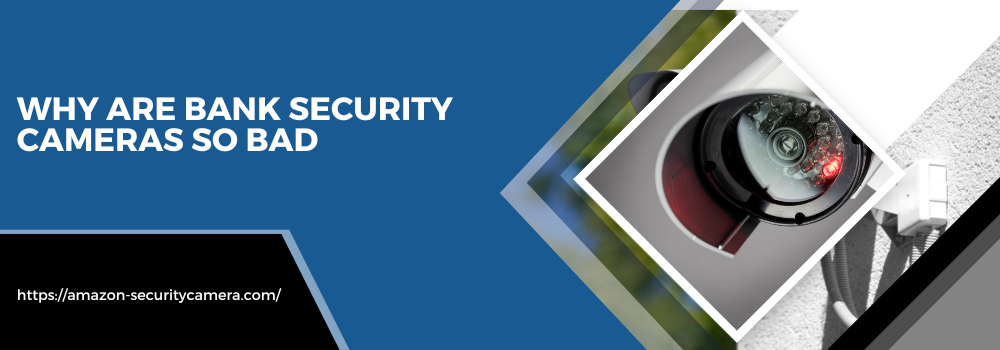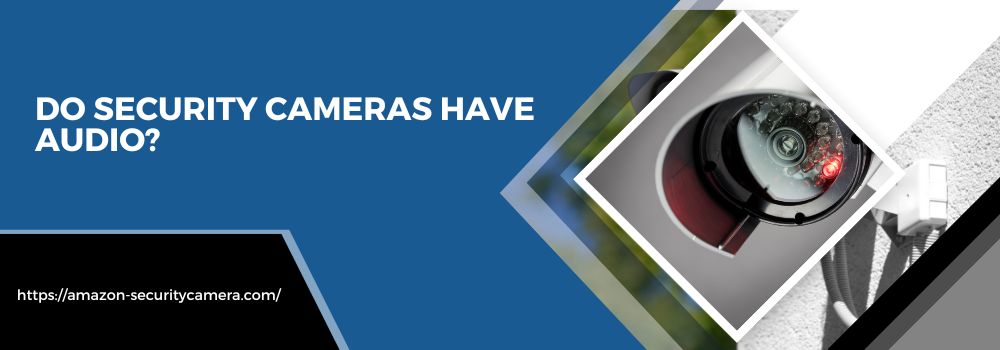Why are Bank Security Cameras So Bad? Bank security cameras play a crucial role in maintaining the safety and integrity of financial institutions. Yet, the pixelated, grainy, and often unclear footage produced by these cameras has been a point of contention over the years. This raises a pertinent question – why, in an era of technological advancement, are bank security cameras seemingly lagging behind?
The primary reason is cost efficiency. Banks often opt to maintain and utilize older security systems despite the quality of the output, as long as the system continues to function and meet the minimum regulatory specifications. Understandably, the decision to replace these systems with high-end, modern cameras comes with substantial financial implications.
This narrative may seem frustrating, especially given the pivotal role banks play in our society. However, as we delve deeper into the complexities and intricacies of bank security systems, we may unearth some surprising realities. So, brace yourself for an eye-opening journey into a world that most of us rarely consider, yet significantly impacts our day-to-day lives.
Why are Bank Security Cameras So Bad?
Read below to learn about Why are Bank Security Cameras So Bad.
Read another article about How to connect security camera to TV without DVR | 5 Best Ways
Table of Contents
What are Bank Security Cameras and why are they important?
Bank security cameras, also known as surveillance cameras, are strategically installed within and around banking premises to monitor and record activities, thereby enhancing security. They serve as a deterrent to potential criminals and aid in the investigation and prosecution of unlawful activities.
- Deterrence: The mere presence of cameras often deters potential criminals from attempting unlawful activities.
- Monitoring: Surveillance cameras allow for continuous, real-time monitoring of the bank premises, helping identify any suspicious behavior.
- Evidence: In case of a crime, security footage serves as crucial evidence, aiding the identification, apprehension, and prosecution of criminals.
- Regulatory Compliance: Banks are required by law to have certain security measures in place, which include surveillance systems.
- Customer Assurance: The presence of surveillance systems provides reassurance to customers about their safety and the security of their financial assets.
Common Problems with Bank Security Cameras?
While bank security cameras contribute significantly to maintaining law and order, they are not without their share of problems. From grainy footage to limited storage capacity, these issues often hinder their efficacy, making us question the reliability of such systems.
- Poor Image Quality: One of the most common complaints is the grainy, pixelated output of many security cameras. Despite technological advancements, this remains a pervasive issue, compromising the identification of criminals.
- Limited Coverage: Cameras often have blind spots, leaving certain areas unmonitored and offering potential loopholes for criminals.
- Storage Limitations: The vast amount of data generated by continuous surveillance needs to be stored. However, limitations in storage capacity often mean that older footage is overwritten, which can be problematic.
- Maintenance Issues: Regular upkeep is needed to ensure camera functionality. Unfortunately, lack of maintenance can lead to system failures, leaving banks vulnerable.
- Technology Compatibility: Upgrading to newer, more sophisticated cameras often requires an overhaul of the existing system, presenting compatibility issues that can be difficult and expensive to resolve.
Poor Quality Video & Audio Recording
When it comes to the poor quality of video and audio recorded by bank security cameras, several factors come into play. These range from outdated technology and inadequate maintenance to other technical constraints.
- Outdated Technology: Older camera models may not have the capacity to record high-quality video and audio.
- Inadequate Maintenance: Regular upkeep of the cameras is crucial for maintaining their recording quality, with negligence leading to degraded performance.
- Insufficient Lighting: Poor lighting conditions in certain areas may affect the quality of the video recorded.
- Low Resolution: Cameras with a low resolution might produce grainy and pixelated images, hindering the identification process.
- Restricted Bandwidth: Limited bandwidth can result in lower video quality as the video feed might be compressed to fit within the available capacity.
- Poor Audio Inputs: Inadequate or damaged microphones can lead to poor audio recording quality.
- Cost Restrictions: High-quality cameras and audio recording devices tend to be more expensive, which might deter financial institutions from investing in them.
Insufficient Range of Viewing Angle
The insufficient range of viewing angles in bank security cameras often leads to blind spots, hampering optimal surveillance. Despite the strategic placement, cameras may fail to cover every inch of the premises.
- Placement Constraints: Some areas of a bank may be difficult to cover due to structural constraints or obstructions.
- Limited Field of View: Some camera models have a narrow field of view, limiting the area they can cover.
- Non-360 Degree Cameras: Standard cameras do not provide a 360-degree view, causing blind spots.
- Low Camera Count: Few cameras can lead to inadequate coverage, leaving certain areas unmonitored.
- Lack of Pan-Tilt-Zoom (PTZ) Features: Cameras without PTZ features cannot adjust their orientation for broader coverage.
Outdated Technology & Incompatible Software
Outdated technology and incompatible software in security camera systems pose a significant challenge. Banks face hurdles in adopting new advancements due to compatibility issues with their existing infrastructure.
- Legacy Systems: Outdated security systems may not support modern, advanced features.
- Software-Hardware Mismatch: Newer cameras may require upgraded software, leading to compatibility issues.
- Expensive Upgrades: The cost of upgrading the entire system, including both hardware and software, can be prohibitive.
- Down Time: Upgrades often require system downtime, leaving banks temporarily vulnerable.
- Technical Expertise: Banks may lack the necessary expertise to handle the complex integration of new technology.
- Bureaucracy: The approval process for system upgrades can be slow and cumbersome in large banking institutions.
- Resistance to Change: There can be internal resistance to change due to familiarity with existing systems.
Maintenance Concerns & Costly Upgrades to Keep Cameras Running
Maintenance and upgrade costs are significant concerns for banks when considering their security camera systems. Expensive upgrades and frequent maintenance can strain budgets while neglecting these aspects can compromise security.
- Recurring Costs: Frequent maintenance and upgrades can be a recurring financial burden for banks.
- Negligence Consequences: Neglecting maintenance can lead to system failures, compromising bank security.
- Updated Technology Cost: Upgrading to new, advanced camera systems can be an expensive undertaking.
- Maintenance Expertise: Banks may require a dedicated or outsourced team of experts to handle maintenance, adding to the cost.
- Equipment Lifespan: Frequent maintenance may be an indicator of a short equipment lifespan, requiring further investments in a new system sooner.
Conclusion
In conclusion, the importance of security in banks cannot be overstated. However, with challenges ranging from poor image quality and limited coverage to outdated technology and high maintenance costs, the current state of surveillance systems leaves much to be desired. As banks form the backbone of our economy, it becomes crucial to invest in innovative solutions that address these issues head-on. After all, every step toward enhanced security is a stride toward a more protected, reliable, and trustworthy banking system.
FAQ
What are the main challenges of using security cameras in banks?
Several challenges exist when implementing security camera systems in banks. These challenges include limitations in storage capacity, maintenance issues, technology compatibility, poor quality of video and audio recording, insufficient range of viewing angles, outdated technology, incompatible software, and high costs for maintenance and upgrades.
How does outdated technology affect the performance of bank security cameras?
Outdated technology can lead to poor quality video and audio recording, restricted bandwidth, low resolution, and reduced range of viewing angles. Additionally, if a bank’s current system is outdated, it may not be compatible with newer, more advanced cameras, leading to complicated and expensive upgrades.
Why is the range of viewing angles important in bank security cameras?
The range of viewing angles is critical to eliminate blind spots and ensure comprehensive surveillance. Cameras with limited fields of view or those that do not provide a 360-degree view can fail to cover every area of the premises, leading to potential security risks.
What issues can arise due to incompatible software in security camera systems?
Incompatible software can lead to several issues including inability to support modern, advanced features of newer cameras, costly and complicated upgrades, system downtime during upgrades, and the need for technical expertise to manage the complex integration of new technology.
Why are maintenance and upgrade costs significant concerns for banks?
Frequent maintenance and upgrades can be a recurring financial burden for banks. Neglecting these tasks can lead to system failures, compromising bank security. Additionally, the cost of upgrading to new, advanced systems can be high and may require a dedicated or outsourced team to manage, adding to the overall financial burden.



